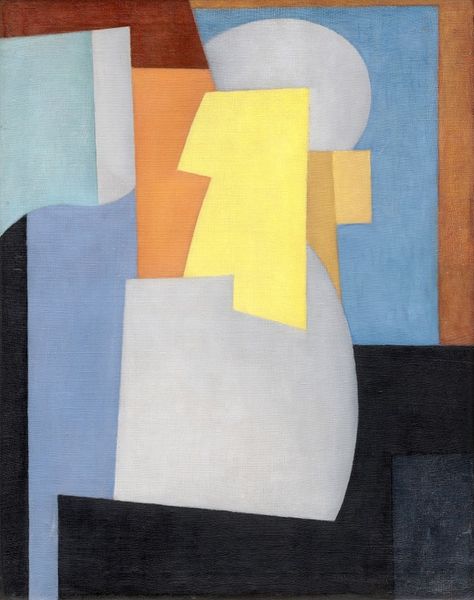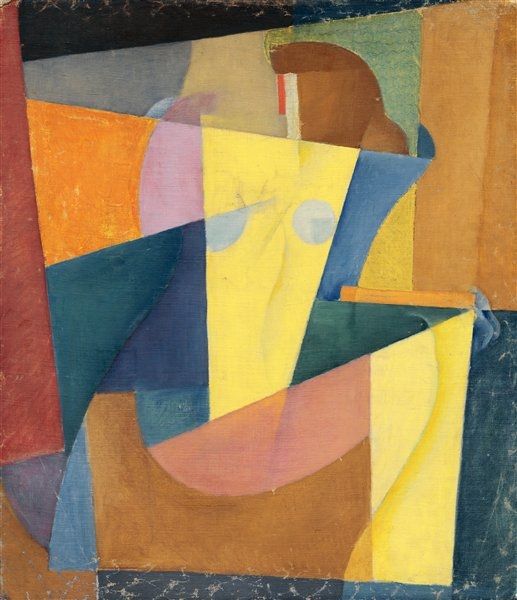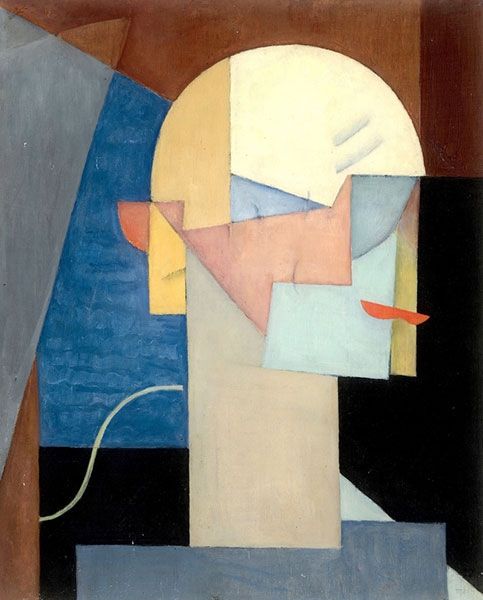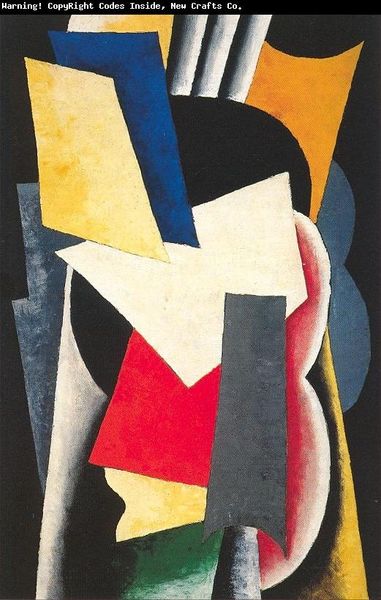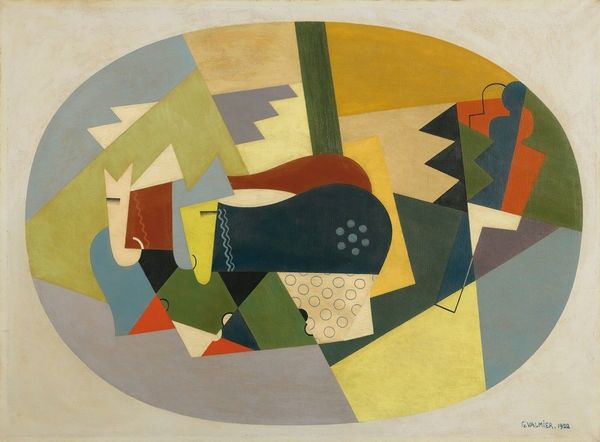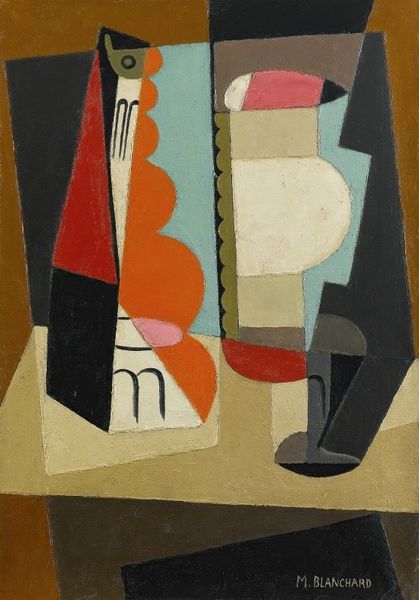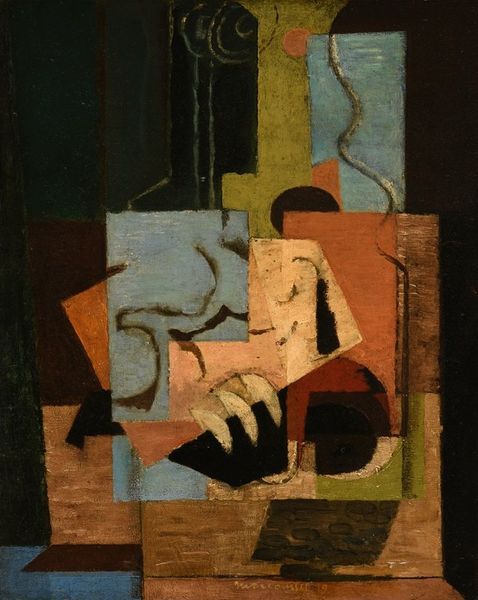
painting, oil-paint
#
portrait
#
cubism
#
painting
#
oil-paint
#
geometric
#
geometric-abstraction
#
abstraction
#
modernism
Dimensions: 41 x 37.5 cm
Copyright: Vytautas Kairiukstis,Fair Use
Curator: Welcome. We’re looking at Vytautas Kairiukstis’s “Sitting Woman” from 1930, currently residing in the Lithuanian Art Museum. Oil paint on canvas. Editor: My first impression is… restrained. There's a definite sense of composure despite the fragmentation of form. It feels almost melancholic, yet firmly grounded. Curator: Note how Kairiukstis dismantles the traditional portrait. He employs Cubist techniques, fragmenting the figure into geometric shapes and planes, shifting perspectives all within a unified canvas. The color palette is muted, restricted, drawing focus to structure. Editor: Exactly. Considering the rise of fascism in Europe at that time, this restraint, this fragmentation, might be interpreted as a response to social upheaval, perhaps an internalized sense of displacement or alienation experienced during modernization. There is a definite loss of the familiar figure as subject, and it’s echoed in contemporary concerns with identity. Curator: That's a reading certainly. But the artwork’s effectiveness could also stem purely from how Kairiukstis orchestrates visual relationships. Observe how the hard angles play against the soft curves – a circle and a semi-circle – within the woman’s body. It creates an elegant tension independent of external context. The subtle modulations of tone – light and shadow – allow the image to come forward. Editor: To remove social context would be negligent though, in my view. This feels deliberate. I want to know if Kairiukstis was making any statements regarding social class through this flattening of the human. Perhaps there are traces of art deco’s sleek futurism too, in how Kairiukstis presents her; even in the way the canvas seemingly denies her individuality. Curator: You propose an interpretation from a socio-historical angle and that can offer additional perspectives. But is the formal interrogation of perception here not profound on its own terms? Do all artworks, in the end, require sociological narratives to achieve significance? Editor: Not all. However, this particular era lends itself to such scrutiny. It's about acknowledging the multifaceted nature of artistic interpretation. Considering context enhances rather than diminishes an artwork’s value. Curator: Indeed. It is through the combined methods that we truly unpack the multiple layers that comprise an artistic composition, in every sense of the term. Editor: Ultimately, the painting acts as a document, one that sparks introspection while engaging us in the turbulent complexities that shaped its conception.
Comments
No comments
Be the first to comment and join the conversation on the ultimate creative platform.

